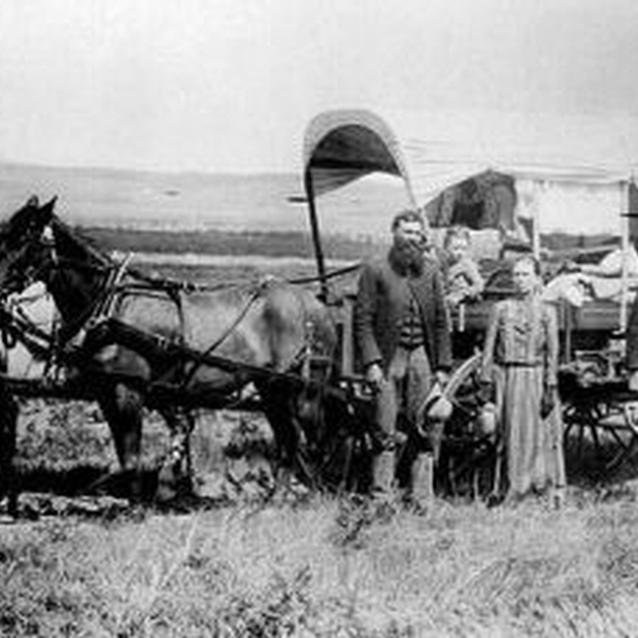The Homestead Act of 1862 is one of the most important pieces of legislation in the history of the United States. Signed into law by Abraham Lincoln in the midst of the Civil War, this act would eventually result in the transfer of 270 million acres of public lands - or 10 percent of the area of the United States - to private individuals.
The Homestead Act of 1862 is recognized as one of the most revolutionary concepts for distributing public land in American history.

National Archives
What was required of a would-be homesteader? He or she had only to be the head of a household, at least 21 years of age and certify that he or she had never taken up arms against the United States to claim a 160-acre parcel of land. Settlers from all walks of life including newly arrived immigrants, farmers without land of their own from the East, single women and former slaves came to meet the challenge of "proving up" and keeping this "free land." Each homesteader had to live on the land, build a home, make improvements and farm for five years before they were eligible to "prove up." A total filing fee of $18 was the only money required, but sacrifice and hard work exacted a different price from the hopeful settlers.
People interested in homesteading first had to file their intentions at the nearest Land Office. A brief check for previous ownership claims was made for the plot of land in question, usually described by its survey coordinates. The prospective homesteader paid a filing fee of $10 to claim the land temporarily, as well as a $2 commission to the land agent.
With application and receipt in hand, the homesteader then returned to the land to begin the process of building a home and farming the land, both requirements for "proving up" at the end of five years. When all requirements had been completed and the homesteader was ready to take legal possession, the homesteader found two neighbors or friends willing to vouch for the truth of his or her statements about the land's improvements and sign the "proof" document.
After successful completion of this final form and payment of a $6 fee, the homesteader received the patent for the land, signed with the name of the current President of the United States. This paper was often proudly displayed on a cabin wall and represented the culmination of hard work and determination.
The Homestead Act remained in effect until it was repealed in 1976, with provisions for homesteading in Alaska until 1986. Alaska was one of the last places in the country where homesteading remained a viable option into the latter part of the 20th century. The Taylor Grazing Act of 1934 substantially decreased the amount of land available to homesteaders in the West. Because much of the prime land had been homesteaded decades earlier, successful Homestead claims dropped sharply after this time.
The Homestead Act of 1862 is recognized as one of the most revolutionary concepts for distributing public land in American history. Echoes of this monumental piece of legislation can be detected today across the American West, decades after the cry of "Free Soil! Free Land!" has faded away.
Last updated: August 10, 2018
